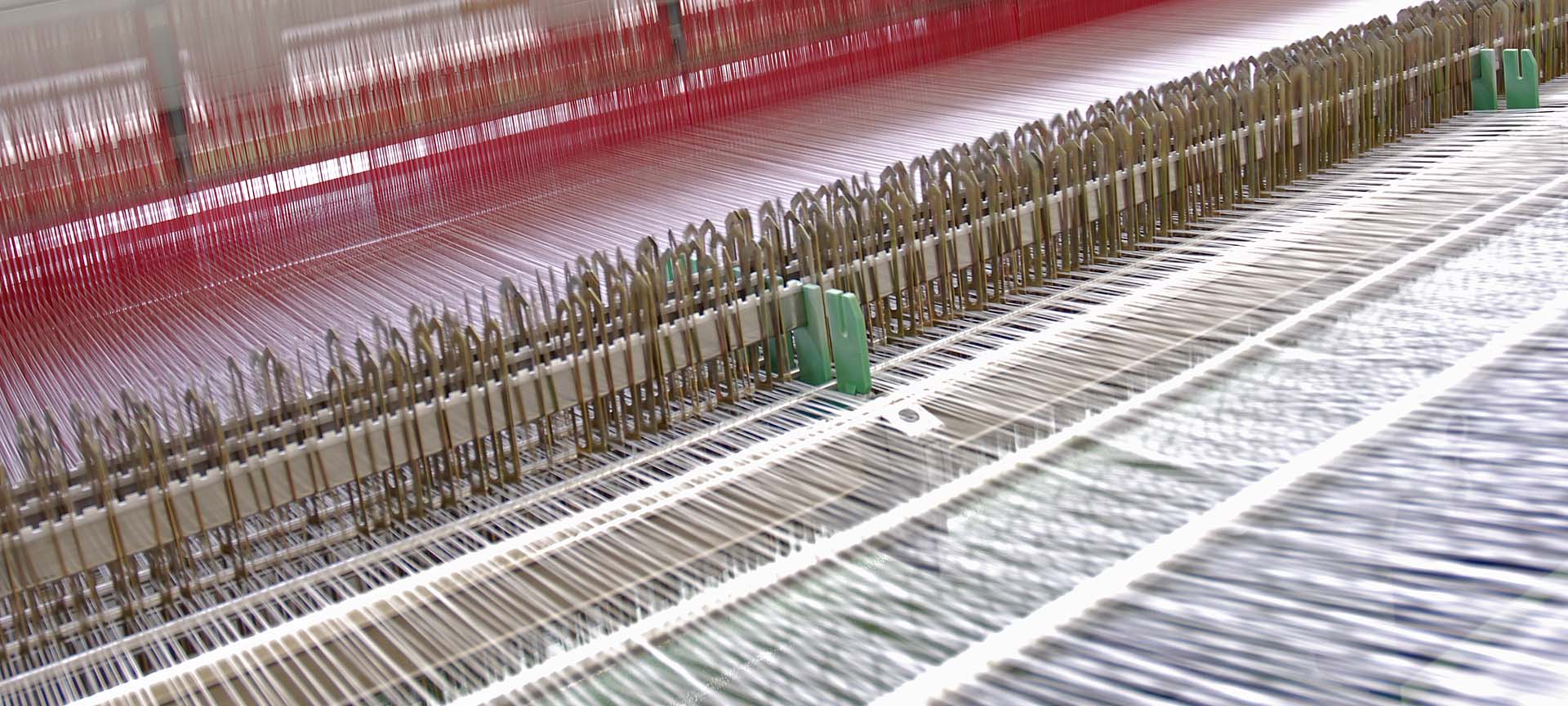Chi siamo
The beginning
In 1920 the brothers Johannes and Wilhelm Kolckmann established a subsidiary of the Würtembergische Kokoweberei AG in Schwäbisch Gmünd. The company wove carpets and durable rugs for stairs and house entrances. However, it could not withstand the economic crisis in the 1920s and had to be liquidated in 1924. The brothers Gaiser from Schorndorf bought the insolvency and founded the company Gebrüder Gaiser GmbH which principal shareholder became Wilhelm Kolckmann. Even in those days the labour costs were an important aspect, thus the majority of the looms were outsourced to the detention centre Schwäbisch Hall in order to produce more cost effectively. The management remained in Schwäbisch Gmünd where all business activities were controlled.
In 1936 the investors left the company and the Kolckmann family took over the firm independently and operated under A.Kolckmann, in short AKO. The letter A in the company’s name goes back to Wilhelm’s wife Aenne since Wilhelm was not allowed to establish his own company due to his business relations to the carpet manufacturer Müller & Dintelmann in Hannover.
On February 23, 1945 all looms were destroyed due to an airstrike on Schwäbisch Hall. After the turmoil of the Second World War and the loss of all mechanical looms in Schwäbisch Hall, the production of carpets and especially rugs were taken up by setting up handlooms at the Schwäbisch Gmünd blind asylum. On these looms so called patchwork rugs were woven out of fabric remnants since coconut fibres were not available so shortly after the war.
In 1947, the couple Kolckmann established a home textile shop for carpets, orient rugs and curtains. A.Kolckmann also distributed carpets and rugs as a wholesaler to the South of Germany.
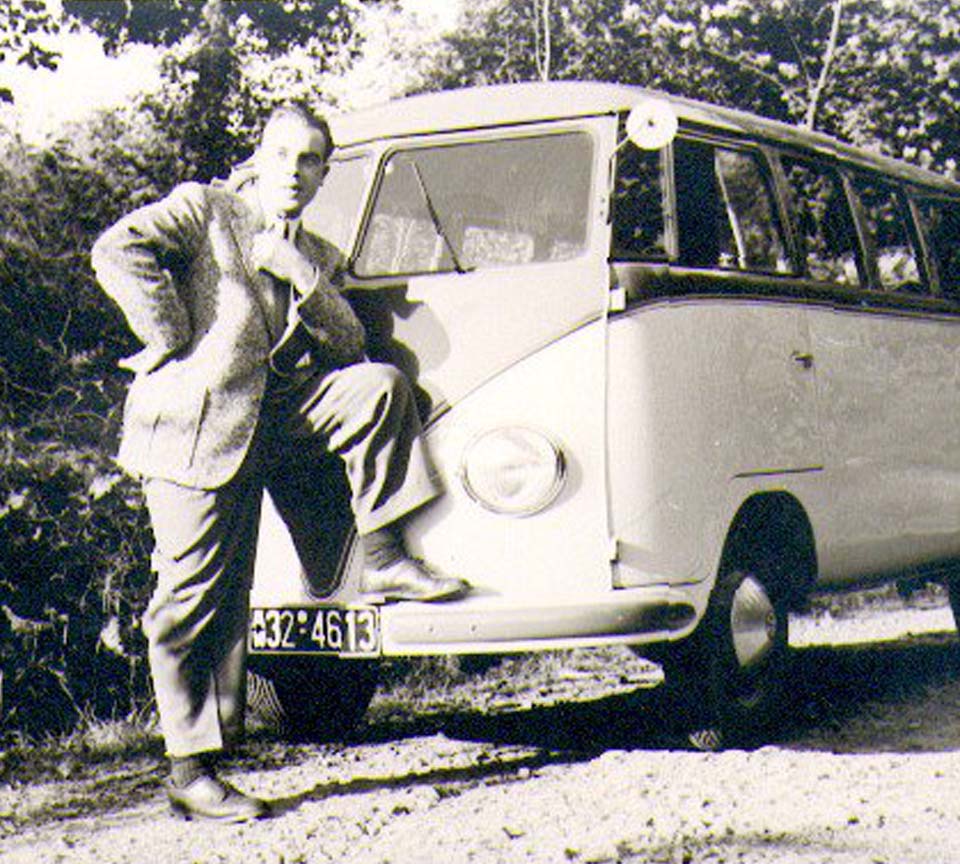

The economic rise
Shortly after their son Claus Kolckmann returned from French captivity on January 26, 1948, he began to work at his parents’ business. For a young man like him at the age of 22, it was easy to be away from home for a couple of days during the week. Therefore, he took up the task of the travelling salesman and was able to prove his sales skills and his way of dealing with customers. Especially the representation for BW with the carpet factory and linen weaving Fulda secured the continuation of the company A. Kolckmann.
Claus Kolckmann was not only a very good salesman but also a typical Swabian tinkerer. It had always been important to him to improve machines or to construct new machines. So together with the wainwright Schorch Berroth, he developed the first handloom on which could be woven up to a width of 2 metres.
The economic boom in the 1950´s resulted in a higher demand of carpets and rugs. As a consequence AKO had to expand as the production site in Schwäbisch Gmünd was not sufficient to meet the increased demand and therefore a new production site for the looms was built in the years 1953/54.
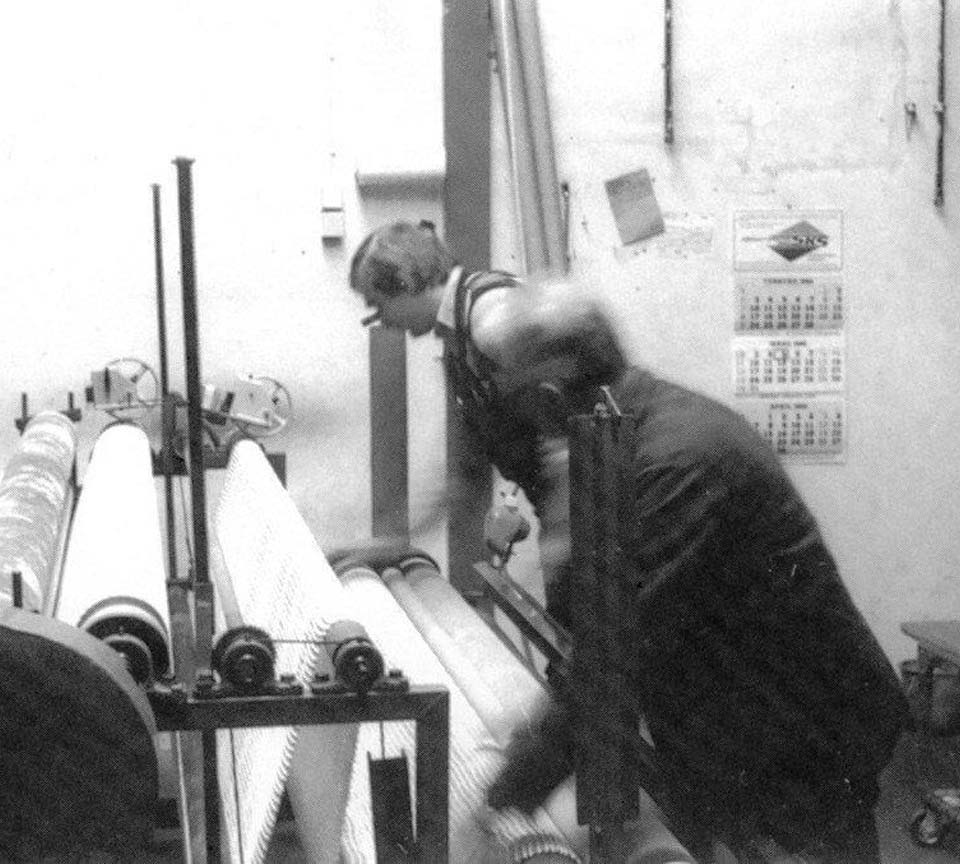
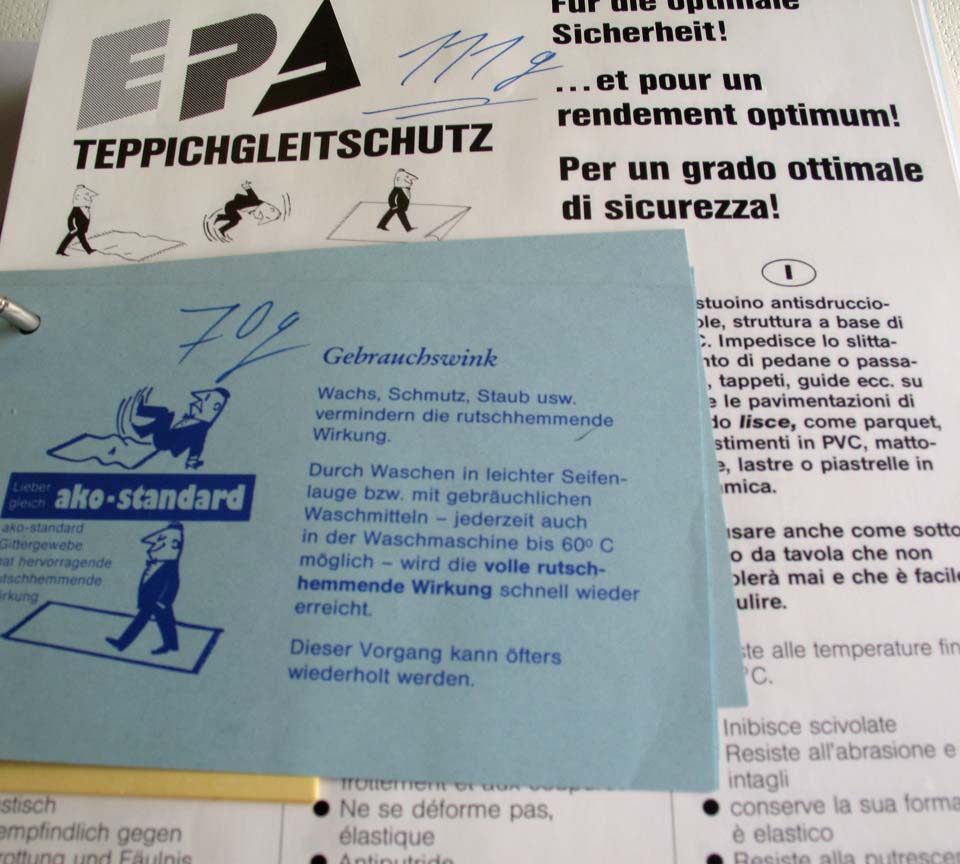
History of the carpet underlays at AKO
During his sales trips Claus Kolckmann noticed that many carpets, rugs and runners were slippery and created waves and thus became tripping hazards. It was clear to him that a solution had to be found for this problem.
In his scarce free time, he fiddled around with various materials in order to turn his idea of a slip-resistant underlay into reality. He was supported in his attempts by the electrical engineer Erwin Stütz. There had been many setbacks but that did not hold him back and in 1960 he succeeded: the first AKO Standard carpet underlay, a yellow, thin, a bit stiff grid was produced on PVC basis in Mutlangen.
AKO standard fulfilled its purpose, yet without any kind of comfort. Claus Kolckmann, however wanted to produce a soft, isolating and obviously slip-resistant carpet underlay. In November 1963, the breakthrough came with the production of the first full surface carpet undelay on PVC soft foam basis – the AKO Elastic 4,5. The naming for this product was easy – elastic since the underlay is elastic and flexible and 4,5 as the thickness of 4,5 mm. This was the beginning of our success story.
AKO Elastic 4,5 was a bestseller. Even at the first Heimtex trade fair in Frankfurt in 1964, the samples were out of stock after one day. So Claus Kolckmann’s wife Mechthild had to make new ones and take them to Frankfurt by car during the night. During this trade fair many contacts to wholesalers and retailers were made who are still customers of AKO in the present day. Also many contacts were established to traveling salesmen during this first fair and maintained for many years.
But for Claus Kolckmann this was not sufficient as he continued to deal with the problem of waves in carpets and runners. In 1968, he invented the first flocked carpet underlay for carpet on carpet AKO Stop. This genius idea, fine polyamid flocks hooked together with the textile flooring and the backside of the laid out carpet was the first development he patented.
Due to his inventiveness and his determination to find solutions, the product line of AKO was continuously expanded with many slip-resistant products such as tablecloth underlays, safety mats for outdoor areas or sport mats. He patented many of his inventions and therefore AKO has been and still is leading in the slip-resistant- and safety mats sector.
His creativity and entrepreneurial farsightedness had the business flourish and made additional production sites necessary. Consequently, the company relocated its production to Alfdorf, which was 7 km away in the Swabian forest in 1970. Since 1978 this is the only company location.
In 1988, Claus Kolckmann decided to return to the origin of the company and built a weaving mill with today 10 looms. The weaving mill has the advantage to operate quickly and more efficient as well as to have the value chain all in one hand. Based on the negative headlines regarding PVC and plasticizer, Mr. Kolckmann chose to expand his machine park with a hotmelt plant. With such it is possible cover up anti-slip coating on carrier material such as foil, fleece or fabric.
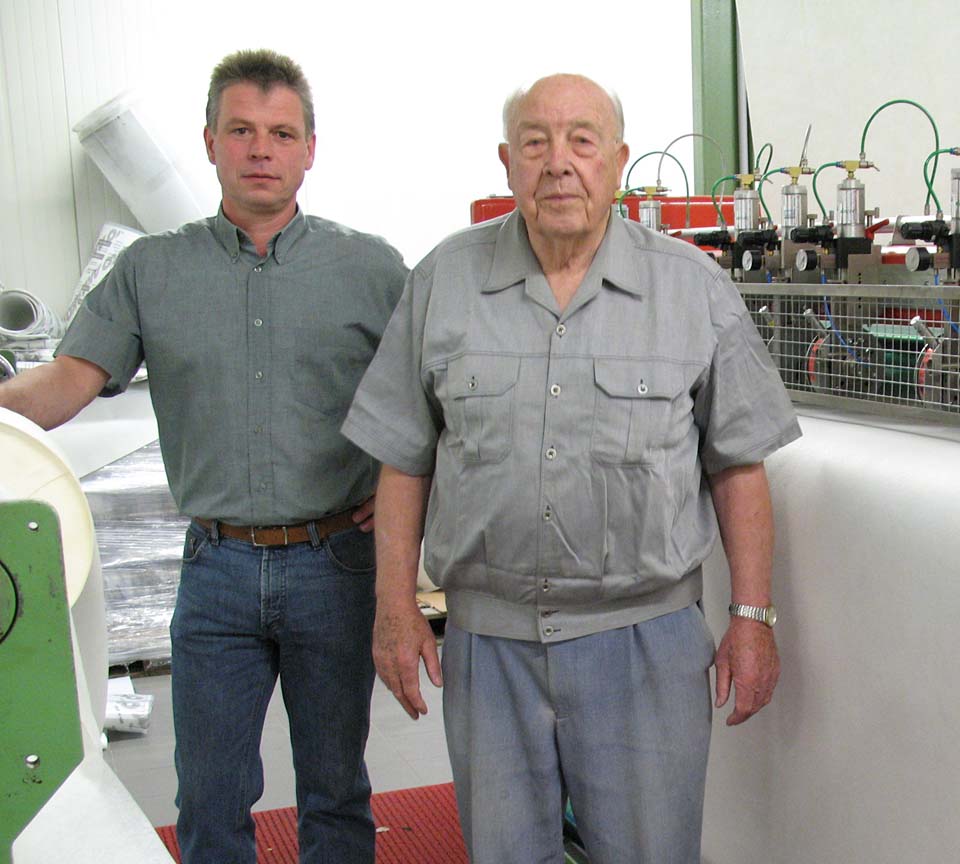

Corporate governance
In 1987, Claus Kolckmann withdrew from the operative management of the company in order to have more time for his hobbies, traveling to faraway countries and to sail on his yacht on the Baltic Sea. Therefore, he passed the executive management over to Leo Vandebosch on January 1, 1988.
Since July 1, 1999 his nephew Cornelius Sorg is heading the company. Until his death on June 14, 2014, Claus Kolckmann advised and supported the company and was always available for his staff. To him this mutual giving and taking has always been an important aspect of the company’s philosophy. This kind of corporate governance is confirmed by the fact that many employees have been working for the company for many years and in some cases in the second generation.
Also part of the corporate management today is the daughter Johanna Kolckmann. Together with her cousin Cornelius Sorg, the philosophy of Claus Kolckmann to put the interests and concerns of the employees before the absolute profit maximization is being upheld and continued.
Johanna’s siblings Ariane, Georg and Claus Joachim Kolckmann support the company and its philosophy. They would like to continue to manage the almost 100 years old company according to their father’s visions and beliefs.
A.Kolckmann GmbH produces exclusively in Alfdorf with around 50 employees and achieved a turnover of € 8.6 million in 2023.
Product history
From the sinple carpet underlay AKO Standard to the persent yoga mat AKO Ying Yang – our products in a chronological overview.
